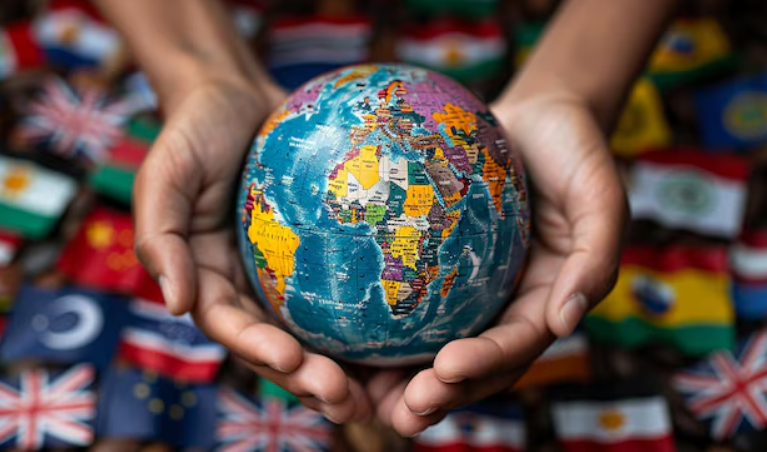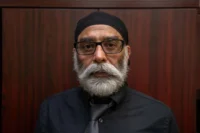By Major (r) Haroon Rasheed, Defense and Strategic Analyst specializing in South Asian military dynamics and technology.
India, the world’s most populous democracy and a rising global power, has long captured international attention for its economic growth, cultural richness, and geopolitical significance. However, in recent global safety and travel risk rankings, India has emerged as the fourth most dangerous country in the world, raising serious concerns about internal security, social inequality, and institutional challenges.
World Tsunami Awareness Day observed
Punjab Cabinet approves recruitment of School Teacher Interns in govt schools
Pakistan committed to strengthen football governance: Gilani
For more such Opinions & Blogs, click here.
Why is India Ranked So High on Danger Lists?
While India is not in an active warzone like Syria, Yemen, or Afghanistan, its inclusion in the top 5 of some danger indices is based on domestic risks rather than military conflict. According to the 2025 rankings by Hellosafe and similar sources, India scores high in societal risk, especially for vulnerable populations like women, minorities, and lower-income groups.
Key Factors Contributing to India’s Dangerous Ranking
1. Violence Against Women
One of the most cited reasons India ranks dangerously high is gender-based violence. According to several human rights organizations and global surveys:
India is considered among the most unsafe countries for women, alongside Afghanistan and Syria.
Incidents of rape, dowry deaths, acid attacks, and honour killings are frequently reported.
The conviction rates in such crimes are often low, leading to underreporting and a culture of impunity.
43rd death anniversary of poet Shabab Keranvi observed
ISPR releases new song in connection with Jammu Martyrs’ Day
Kashmiris will observe Jammu Martyrs’ Day tomorrow
2. Terrorism and Regional Tensions
India has a long history of cross-border terrorism, particularly in Jammu & Kashmir, where tensions with Pakistan remain high. Occasional terror attacks in major cities like Mumbai and Delhi have raised red flags among global risk analysts.
Insurgency movements in northeastern India and left-wing extremism (Maoist violence) in central India also contribute to internal security concerns.
3. Communal Violence and Political Unrest
Rising incidents of religious intolerance, mob lynchings, and communal riots have affected social harmony.
Political polarization and violent protests—such as those seen during the Citizenship Amendment Act (CAA) protests—have sparked global criticism over India’s human rights environment.
4. Weak Healthcare and Infrastructure
India’s massive population puts intense pressure on its healthcare and emergency systems, especially in rural areas.
In the aftermath of the COVID-19 pandemic, India’s healthcare gaps were exposed globally.
Public transportation accidents, unsafe roads, and poor urban planning contribute to daily hazards for citizens and visitors alike.
Jammu massacre continues to haunt Kashmiris despite passage of decades
Shaheen Afridi Downplays Winning Start to ODI Captaincy: “It Was Just a Normal Game”
Zohran Mamdani — The Immigrant Who Made His Mark
5. Environmental & Natural Disaster Risks
India is also prone to natural disasters—including earthquakes, floods, and cyclones—which are worsened by unregulated urban growth and deforestation.
Climate change has intensified monsoon variability, raising risks of displacement and loss of life.
Global Rankings and Their Methodology
India is ranked #4 on Hellosafe’s Travel Risk Index (2025), behind:
1. Philippines
2. Colombia
3. Mexico
Unlike the Global Peace Index, which focuses on conflict and militarization, travel and safety indices consider:
- Crime rates
- Health risk
- Terror threats
- Natural disaster vulnerability
- Gender and minority rights
On the Global Peace Index, India ranks 116 out of 163 countries—not among the worst but well below many nations of similar size and economic standing.
Hamza Ali Abbasi, “Even Those Who Marry Four Times Still Engage in Relations Outside of Marriage”
Pro-Khalistan Group Pledges Support to Pakistan in Case of India–Pakistan Conflict
The Dichotomy of Progress and Danger
It’s important to note that India is also:
A nuclear power with the world’s fifth-largest economy
A key player in international diplomacy, especially through BRICS and the G20
A nation with enormous cultural and scientific contributions
Yet, these strengths coexist with deep-rooted challenges in governance, inequality, and justice, making the country a paradox of potential and peril.
Conclusion
India’s ranking as the fourth most dangerous country in certain reports may appear controversial—but it reflects a sobering reality for many of its own citizens. While war may not rage in its streets, daily life is fraught with gender-based violence, poor infrastructure, religious tensions, and uneven law enforcement.
Addressing these issues requires more than just development—it calls for inclusive governance, police reform, judicial accountability, and a renewed commitment to human rights. Only then can India shift from being seen as dangerous to truly being a safe and secure place for all.
For more such Opinions & Blogs, click here.
6 killed as passenger train rams goods train in India
Former US vice president Dick Cheney dead at 84
Israel Hands Over Bodies of 45 Palestinians
Indian college student gang-raped near airport
Major (R) Haroon Rasheed is a Defense and Strategic Analyst specializing in South Asian military dynamics, deterrence strategy, and defense modernization. He is a member of the Research and Evaluation Cell for Advancing Basic Amenities and Development (REC ABAD).
Stay tuned to Baaghi TV for more. Download our app for the latest news, updates & interesting content!






